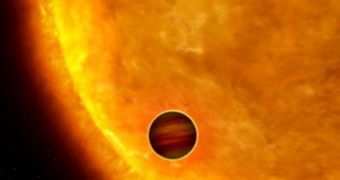Lately, as more and more exoplanets are discovered, studies arguing that some are habitable and some aren't are becoming common in the scientific literature. American scientists now explain the basis of how the habitability level of an exoplanet is established.
The most widely used method of detecting extrasolar planets in orbit around other stars is observing slight changes in the brightness of light emanating from distant stars. Such an event signifies that a space object passed in between the observer and the star.
There are only so many options on what these objects may be. They could be asteroids or comets, but in that case they would only pass in front of their parent stars once every few decades, maybe more.
But if astronomers observe the aforementioned brightness fluctuations once every 30 days, for example, then they can be sure that the variations are caused by an object actually orbiting the star.
Experts at the Massachusetts Institute of Technology (MIT) compare this type of transit to an eclipse, with the exception that the exoplanet moving in front of its parent star does not obscure all of its light.
In fact, the variations produced by even the most massive exoplanets ever discovered are very small. That's why extremely sensitive space telescopes are used to analyze the light emitted by those stars.
But investigating how a planet obscures its parent's light can also provide a number of useful data about the celestial object, such as for existence its precise weight, and the type of molecules that are predominant in its atmosphere.
These datasets are then used to determine whether the exoplanet is rocky or gaseous, and whether it resembles Earth or is more like Jupiter and Saturn. Of the nearly 520 exoplanets found up until now, none was found to exhibit traits that could turn them into a second Earth.
In the near future, astronomers hope to be able to modify transition-observing technologies to such an extent that they will become able to investigate the nature of chemicals in an exoplanet's atmosphere.
The objective here is to gain the ability to scan these atmospheres in search of water, carbon dioxide or other similar molecules. These could then be considered as indicators that life can develop there.
If that particular exoplanet is also found orbiting in the habitable zone of its parent star, which means that temperatures are just right to allow for the existence of liquid water, then astronomers can announce the discovery of a second Earth.
The NASA Kepler mission is about to confirm an additional 500 exoplanets this year and the next, and hopes are high that at least a handful of planets will be Earth-class ones.

 14 DAY TRIAL //
14 DAY TRIAL //